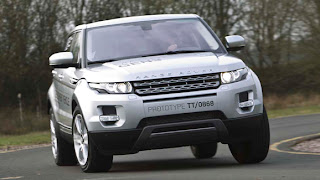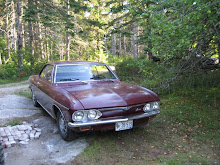Not long after Land Rover re-entered the US market in 1987, LRNA President Charles Hughes noted that one great challenge for the marque was that relatively few people knew the Land Rover marque at all, and nowhere near enough knew the Range Rover.
You were not only trying to interest people in a particular model, you were trying to convince them to part with their hard-earned dollars and give them to a automobile company that for many had receded into distant memory. After all the last new Land Rovers left the US market in 1974 and they resembled the first ones from 1948 - hardly contemporary in appearance.
The Rover name had been further tainted by the marketing efforts behind the Rover 3500, and worse, the Sterling [the name given to a Rover-Honda car because old British Leyland litigation might have been resumed had the Rover name appeared on the car], proof that the Rover nameplate did not bring back fond memories.
Give Land Rover credit, though. Starting with the Range Rover, they brought in the Defender, Discovery, Freelander, LR3 and LR4 models, and now, the Evoque. Land Rover enthusiasts like me might shiver at the sight of one but guess what - Land Rover is an automobile manufacturer in business to make money selling new cars every year in over 168 world markets.
The Defender lineup might be the emotional successor to the Series Land Rover models, but at most Land Rover can make and sell 35,000 of them, out of the over 200,,000 cars produced annually. So the models less-loved by enthusiasts provide most of the profit margin needed by the company.
The Evoque keeps winning award after award. There's a 7 month wait for one in the UK, something that would be nearly impossible to fathom in the instant-gratification world of the US. Good for Land Rover for producing a small Range Rover with 28 mpg highway, eye catching looks and some pretty good off road cred!
Thursday, January 12, 2012
Connected to What?
Attention is back to automobiles again with the opening of the North American Auto Show in Detroit. Among the attention-getters is the trend towards wireless connectivity between your devices and your automobile.
Automakers have come to learn that consumer technology can change more rapidly that the lead time for automobiles. Stand-alone devices such as GPS's, digital cameras and even laptops might be rendered obsolete by cellphones and tablets - so why incorporate them into automobiles as optional accerssories?
“While we are already working on the cars that will hit the road seven years from now, the next disruptive consumer technology might hit the market in seven months,” Dr. Dieter Zetsche of Daimler said. “A 20-year-old car might be a classic that you love to drive, but do you know anybody who is still using a 20-year-old mobile phone?”
That's a good point that centers of the real question. Should automobiles just become an adjunct to the wireless world or should they retain a connectivity unique to themselves?
When one said their car had a certain "feel," they usually meant the way the suspension and steering let the driver know about road conditions. Cars that isolated you from the road, generally through wallowing suspensions, extra bushings and overly-sensitive power steering, offered little to no "road feel."
Now our sense of connection with the road has more to do with the world off the traveled road - the web. Automakers rushed to make their cars connect, through phone systems like OnStar, to hard drive storage, like MySynch. As one commentator noted, why should automakers seek to create unique devices when apps for smartphone or tablet will accomplish the same things. Who needs a stand-alone GPS if they have their cellphone? Garmin and Tom Tom will likely keep searching for answers to that question.
The larger question is whether we should be letting devices answer all theese questions for us. Imagine a time when you looked at a thermometer, saw that it approached 32 F, and drew the conclusion that you needed to drive with added care because black ice might cover parts of the road. Now luxury auto lines compete with who can provide you with the greatest number of features - ones to alert you of icing conditions [the Rover 3500 offered a primitive version of this in the 1970's], whether an obstacle or child is behind you when you're backing up, even parallel parking. Of course, you could just learn to check the weather, get outside the car and just look, and learn how to maneuver your car into tight places.
Nah!
Subscribe to:
Comments (Atom)








